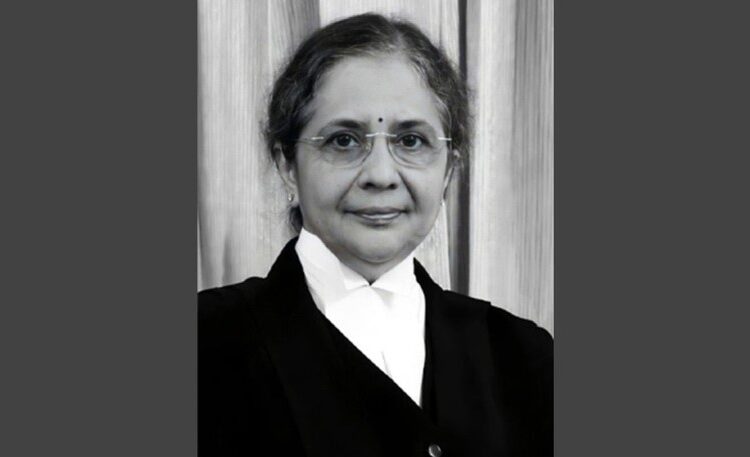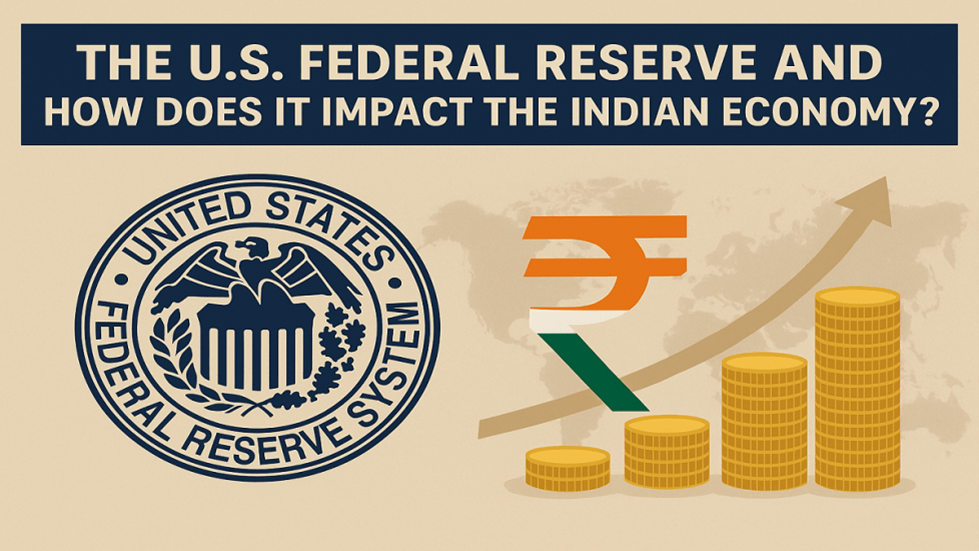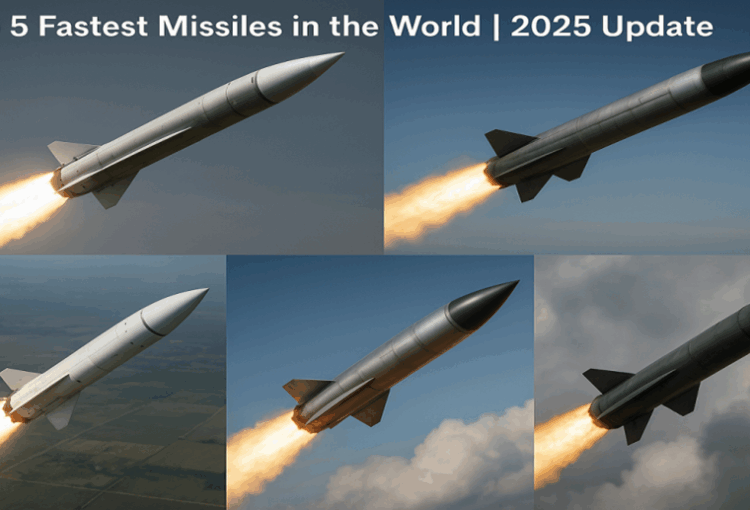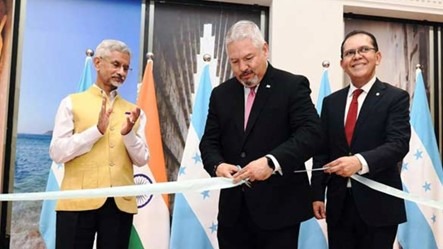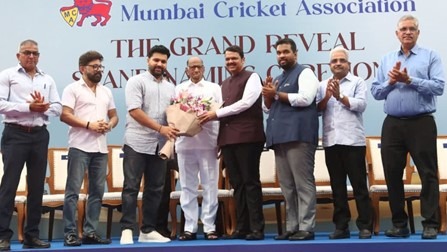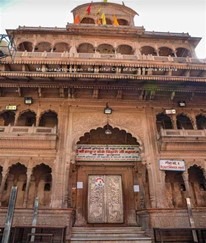PMAY-U Coffee Table Book Released in Kohima to Highlight Urban Housing Progress
Syllabus:Schemes
Context:
- The Government of Nagaland has officially unveiled a Coffee Table Book titled “Transforming Lives: A Glance of Pradhan Mantri Awas Yojana (Urban) Mission in Nagaland”.
- This publication commemorates the progress and impact of the Pradhan Mantri Awas Yojana – Urban (PMAY-U) scheme in the state, particularly in providing dignified and affordable housing to urban poor communities.
Significance of the Launch
- Date & Venue: May 16, 2025 | Hotel Vivor, Kohima
- Released by: Shri Zhaleo Rio, Advisor for Municipal Affairs and Urban Development
- Chaired by: Shri Kekhrievor Kevichusa, Commissioner & Secretary, MAUD
Special Features:
- Invocation by Rev. Dr. Kevichalie Metha
- Musical performance by TRUISM
- Vote of thanks delivered by Smt. Temjenrenla Kichu, Joint Director, Municipal Affairs Department
About the Coffee Table Book
- Title: Transforming Lives: A Glance of PMAY (Urban) Mission in Nagaland
- Purpose: To visually document success stories, policy implementation, and community transformation under PMAY-U
Content Highlights:
- Real-life narratives of beneficiaries
- Visual documentation of urban development
- Insights into implementation challenges and grassroots engagement
Overview of PMAY-U (Pradhan Mantri Awas Yojana – Urban)
- Launched: June 25, 2015
- Nodal Ministry: Ministry of Housing and Urban Affairs (MoHUA)
- Objective: Housing for All in urban areas by the year 2022
Key Components:
- In-Situ Slum Redevelopment (ISSR)
- Credit-Linked Subsidy Scheme (CLSS)
- Affordable Housing in Partnership (AHP)
- Beneficiary-Led Construction (BLC)
Impact of PMAY-U in Nagaland
- Thousands of urban households have benefitted from housing assistance
- Strengthened the construction sector and generated employment
- Enhanced socio-economic inclusion through property registration in women’s names
- Improved access to basic amenities, leading to better quality of life for urban poor
With reference to the Coffee Table Book “Transforming Lives: A Glance of PMAY (Urban) Mission in Nagaland”, consider the following statements:
- The book was launched by the Ministry of Information and Broadcasting to commemorate 75 years of India’s independence.
- The book contains a visual record of PMAY-U implementation challenges and beneficiary narratives in Nagaland.
- The event was presided over by the Governor of Nagaland and included an address by the Prime Minister.
Which of the statements given above is/are correct?
A) 2 only
B) 1 and 3 only
C) 1 and 2 only
D) 2 and 3 only
Answer:A
Explanation:
- Statement 2 is correct. The book documents the visual and narrative impact of PMAY-U in Nagaland, including challenges and success stories.
- Statement 1 is incorrect as the book was released under the Ministry of Housing and Urban Affairs, not the Ministry of Information and Broadcasting, and it was not linked to the 75th year of independence.
- Statement 3 is incorrect as the event was chaired by state officials—not by the Governor or Prime Minister.
Justice Bela M. Trivedi Bids Farewell to Supreme Court After Trailblazing Career
Syllabus:Polity
- Justice Bela M. Trivedi retired from the Supreme Court of India on May 16, 2025, after a distinguished tenure of three-and-a-half years.
- Her career stands out for a series of pioneering milestones, significant constitutional rulings, and a legal journey that spanned from trial courts to the apex judiciary.
- Justice Trivedi’s retirement marks the culmination of a historic legal journey, beginning in Gujarat’s trial courts in 1995 and culminating in transformative judgments on constitutional law, child protection, reservation policy, and economic regulation.
- She was the 11th woman judge in the history of the Supreme Court of India and one of the rare judges to be elevated from a trial court (appointed July 10, 1995, Ahmedabad) to the Supreme Court (August 31, 2021).
- She was also featured in the Limca Book of Records for being part of a father-daughter judge duo serving in the same court.
- Among her landmark judgments were the EWS Reservation Case (Nov 2022), where she was part of the 5-judge bench that upheld 10% reservation under the 103rd Constitutional Amendment; the Sub-classification within SCs case (Aug 2024), where she delivered a dissenting opinion against allowing states to sub-categorise Scheduled Castes; and the POCSO Act Interpretation (Nov 2021), where she overruled the controversial “skin-to-skin” verdict by emphasizing that intent and any physical contact qualify as sexual assault.
- In the IBC ruling, she held that a moratorium under IBC does not prevent states from attaching properties under depositor protection laws.
- In May 2025, she cleared the UP government’s temple corridor project for the Banke Bihari temple in Mathura.
- Professionally, she practiced law in the Gujarat High Court for a decade, held key administrative roles including Registrar Vigilance and Law Secretary in Gujarat, was elevated to the Gujarat High Court in 2011, transferred to the Rajasthan High Court the same year, and returned to the Gujarat High Court in 2016.
- She was appointed to the Supreme Court in 2021 during a historic induction of 9 judges, including 3 women.
- Justice Trivedi’s legal journey is emblematic of progress in gender inclusivity and judicial reform.
- Her judgments have significantly influenced protections for children, rights of marginalized communities, and constitutional law, leaving a lasting legacy in Indian jurisprudence.
With reference to the judicial career of Justice Bela M. Trivedi, consider the following statements:
- She was elevated directly from a trial court to the Supreme Court without serving in any High Court.
- She dissented in a Supreme Court judgment allowing states to sub-categorize Scheduled Castes, arguing it violated the constitutional mandate of equality.
- She authored the majority opinion in the 2022 verdict upholding the 10% reservation for Economically Weaker Sections (EWS) under the 103rd Constitutional Amendment.
- In a landmark ruling under the POCSO Act, she held that absence of physical skin-to-skin contact nullifies the charge of sexual assault.
Which of the statements given above is/are correct?
A) 2 only
B) 1 and 4 only
C) 2 and 3 only
D) 1, 2 and 4 only
Answer: A) 2 only
Explanation:
- Statement 1 is incorrect: Justice Trivedi served in multiple High Courts (Gujarat, Rajasthan) before being elevated to the Supreme Court.
- Statement 2 is correct: She gave a dissenting opinion in the case allowing sub-categorisation within SCs, citing concerns over equality.
- Statement 3 is incorrect: While she was part of the 5-judge bench in the EWS case, she did not author the majority opinion.
- Statement 4 is incorrect: She overruled the “skin-to-skin” verdict, emphasizing that any physical contact with sexual intent qualifies as assault under the POCSO Act, regardless of direct skin contact.
Amit Shah Inaugurates Upgraded ₹500 Crore MAC to Combat Terrorism
Syllabus:Security
Revamped Multi Agency Centre (MAC) – Key Points
Why in News:
- Inaugurated by Union Home Minister Amit Shah on May 16, 2025 in New Delhi.
- Developed at a cost of ₹500 crore.
- Housed under the Intelligence Bureau (IB).
- Aims to boost coordination in combating terrorism, organised crime, and cyber threats.
Background & Context:
- Conceptualised post-Kargil War (1999).
- Became operational in 2001.
- Functions as India’s central counter-terrorism coordination grid under the IB.
Key Features:
- ₹500 crore investment.
- Links all police districts nationwide.
- Integrates 28 agencies, including:
- Research & Analysis Wing (RAW)
- Indian Armed Forces
- State Police Forces
- Central Armed Police Forces (CAPFs)
- Border Security Force (BSF)
Technological Enhancements:
- Integration of Artificial Intelligence (AI) and Machine Learning (ML):
- Enables predictive threat modelling.
- Supports timeline-based intelligence.
Geographic Information System (GIS):
- Facilitates hotspot mapping and spatial threat analysis.
Outcome-Oriented Capabilities:
- Real-time data sharing across agencies.
- Trend forecasting for preemptive action.
- Creation of an integrated national security database.
Strategic Objectives:
- Enhance responses to:
- Terrorism
- Left-Wing Extremism (LWE)
- Cyber threats
- Organised transnational crime
- Eliminate information silos.
- Promote centralised intelligence processing.
Associated Operations:
- Operation Sindoor 2025: Model of inter-agency operational synergy.
- Recent anti-Naxal operations (Chhattisgarh-Telangana border): Showcased MAC’s real-time coordination capability.
With reference to the revamped Multi Agency Centre (MAC) inaugurated in 2025, consider the following statements:
- The upgraded MAC is an initiative under the Ministry of Defence and serves as a national data fusion center for defence logistics and surveillance.
- The MAC integrates artificial intelligence, machine learning, and geographic information systems to facilitate predictive threat analysis and spatial intelligence.
- The MAC was first conceptualised following the recommendations of the Kargil Review Committee and functions under the administrative control of the Intelligence Bureau.
- Operation Sindoor 2025, linked with MAC, was a joint counter-insurgency operation conducted along the India-Myanmar border.
Which of the statements given above is/are correct?
A) 2 and 3 only
B) 1 and 4 only
C) 1, 2 and 4 only
D) 2, 3 and 4 only
Answer: A) 2 and 3 only
Explanation:
- Statement 1 is incorrect: MAC functions under the Ministry of Home Affairs, not the Ministry of Defence, and it is not focused on defence logistics but on intelligence coordination, especially for counter-terrorism.
- Statement 2 is correct: The revamped MAC uses AI, ML, and GIS for predictive modelling and spatial analysis.
- Statement 3 is correct: It was conceptualised post-Kargil War based on the Kargil Review Committee’s recommendations and is operated by the Intelligence Bureau (IB).
- Statement 4 is incorrect: Operation Sindoor 2025 is not associated with the India-Myanmar border, but rather it is mentioned as a benchmark for inter-agency coordination, without specific geographic attribution.
What is the U.S. Federal Reserve and How Does It Impact the Indian Economy?
Syllabus:Economy
- The U.S. Federal Reserve (the Fed) is one of the most influential financial institutions globally, shaping not only the U.S. economy but also impacting emerging economies like India. Recently, the Fed’s decision to maintain interest rates between 4.25% and 4.50% has sparked extensive discussions among markets, economists, and policymakers.
Understanding the U.S. Federal Reserve:
- Established in 1913 by an act of Congress, the Federal Reserve is the central bank of the United States. Its primary objective is to ensure a safe, flexible, and stable financial system. Over time, it has become a cornerstone of global financial stability.
Key Functions of the Federal Reserve
- Setting interest rates to manage inflation and promote economic growth
- Controlling money supply to maintain financial liquidity
- Regulating and supervising banks and financial institutions
- Providing stability during financial crises, such as the 2008 recession and the COVID-19 pandemic
- These roles help keep both domestic and international markets resilient during economic challenges.
Governance of the Federal Reserve:
- Though independent in operation, the Fed is a public institution. The U.S. President appoints its Chairperson, who then functions independently. The Federal Open Market Committee (FOMC), led by the Chair, is responsible for monetary policy decisions, including setting the federal funds rate, which influences global borrowing costs.
Recent Monetary Policy Update: March 2025
- Interest rates remained steady at 4.25% to 4.50%
- S. GDP growth forecast revised down to 1.7% from 2.1%
- Inflation, measured by the Personal Consumption Expenditures (PCE) index, projected to rise to 2.7%
- This announcement was closely monitored worldwide, including in India, due to its potential ripple effects on emerging markets.
Global Impact of Federal Reserve Policies:
- The Fed’s decisions have wide-reaching global implications because the U.S. dollar serves as the world’s primary reserve currency, and U.S. Treasury bonds are considered safe investments. When the Fed raises rates, investors often pull money from emerging markets to invest in U.S. assets, while stable or lower rates tend to encourage capital inflows into countries like India.
How the Fed Influences the Indian Economy
- Indian Stock Markets: Stable or low U.S. rates attract Foreign Portfolio Investors (FPIs) to Indian equities, boosting indices like the Nifty 50 and Sensex. Rate hikes may lead to capital withdrawal and market volatility.
- Indian Rupee:S. rate changes affect the dollar’s strength, influencing the rupee’s value. A stronger dollar weakens the rupee, raising import costs and inflation in India. Stable rates help stabilize the rupee, aiding inflation control.
- Foreign Investment Trends: Lower U.S. interest rates historically coincide with increased foreign investments in sectors like technology, real estate, manufacturing, and financial services in India. From October 2024 to March 2025, FPIs withdrew nearly $28 billion, but stable Fed rates could encourage reinvestment.
Sectoral Impact in India
- Aviation: IndiGo Airlines benefits from expanded international operations.
- Defence Manufacturing: Companies like Mazagon Dock and Cochin Shipyard see stock gains due to favorable policies.
- Sugar Industry: Anticipated low production has increased sugar stock prices.
- Power Sector: NTPC gains from rising electricity demand and focus on energy security.
- These sectoral trends reflect how Fed policies influence Indian economic growth.
Implications of the Fed’s March 2025 Decision for India
Opportunities:
- Increased foreign capital inflows
- Rupee stability aiding inflation management
- Continued stock market growth driven by investor confidence
- Manageable consumer borrowing costs benefiting housing and auto sectors
Risks:
- Potential future Fed rate hikes if U.S. inflation rises, disrupting capital flows
- Global uncertainties like geopolitical tensions, energy price volatility, and trade disruptions that could impact India’s economy
- In conclusion, while the Fed’s current stance offers India significant benefits, it also warrants cautious monitoring of global and domestic risks.
Consider the following statements regarding the impact of Fed policies on India:
- Fed’s rate hikes generally cause capital outflows from India and depreciate the rupee.
- Stable Fed rates encourage increased Foreign Direct Investment (FDI) in India’s manufacturing sector.
- The Fed’s monetary policy decisions directly control inflation levels in India.
Which of the statements given above is/are correct?
A) 1 only
B) 1 and 2 only
C) 2 and 3 only
D) 1, 2 and 3
Answer: A
Explanation:
- Statement 1 is correct. Fed rate hikes cause capital outflows and rupee depreciation.
- Statement 2 is partially correct for FPI, not FDI, which depends on broader factors.
- Statement 3 is incorrect because India’s inflation is influenced by domestic factors and RBI policies.
Which District of Jammu and Kashmir is Known as the Land of Sapphire?
Syllabus:Geography
- Jammu and Kashmir, a union territory in northern India, is renowned for its diverse landscapes and cultural significance.
- Situated in the larger Kashmir region, it shares borders with Himachal Pradesh, Punjab, Ladakh, as well as the Pakistani-administered areas of Azad Kashmir and Gilgit-Baltistan.
- The region has been a subject of long-standing disputes between India, Pakistan, and China.
- The union territory is administratively divided into 20 districts, grouped into two main divisions: Jammu Division and Kashmir Division, facilitating local governance and administration.
- Among these districts, Kishtwar stands out uniquely and is famously known as the “Land of Sapphire.” This title stems from the Paddar region within Kishtwar, which is famous for its rare and exquisite blue sapphires.
- These precious gemstones, often referred to as “Kashmiri sapphires,” are celebrated worldwide for their deep blue hue and exceptional quality. Notably, although these sapphires bear the Kashmir name, they are actually sourced from Paddar in Kishtwar, not from the Kashmir Valley itself.
- Kishtwar is a mountainous district located in the eastern part of Jammu and Kashmir, characterized by its natural beauty with the Chenab River coursing through it, surrounded by dense forests, towering peaks, and abundant wildlife.
- Established as a separate district in 2007, after being carved out of the Doda district, Kishtwar’s economy primarily relies on agriculture, sheep rearing, and handicrafts, alongside the collection of forest products by local communities.
Consider the following statements regarding Kishtwar district in Jammu and Kashmir:
- Kishtwar is known as the “Land of Sapphire” due to its rich deposits of blue sapphires found in the Kashmir Valley.
- The Paddar region within Kishtwar is the primary source of these sapphires.
- Kishtwar district was carved out of Doda district in 2007.
- The Chenab River flows through Kishtwar, contributing to its rich biodiversity.
Which of the statements given above is/are correct?
A) 1 and 3 only
B) 2, 3, and 4 only
C) 1, 2, and 4 only
D) All of the above
The correct answer is: B) 2, 3, and 4 only
Explanation:
- Statement 1: Kishtwar is known as the “Land of Sapphire” due to its rich deposits of blue sapphires found in the Kashmir Valley.This is incorrect.
- While Kishtwar is called the “Land of Sapphire,” the sapphires come from the Paddar region within Kishtwar, not from the Kashmir Valley itself.
- The term “Kashmiri sapphires” is often used commercially for these stones, but geologically and geographically, they originate from Paddar, which lies outside the Kashmir Valley.
- Statement 2: The Paddar region within Kishtwar is the primary source of these sapphires.
- This is correct. Paddar is the key area known for rare, high-quality blue sapphires in Kishtwar district.
- Statement 3: Kishtwar district was carved out of Doda district in 2007.
This is correct. Kishtwar became a separate district after being part of Doda. - Statement 4: The Chenab River flows through Kishtwar, contributing to its rich biodiversity.
This is correct. The Chenab River runs through the district, supporting the region’s ecology.
Top 5 Fastest Missiles in the World [2025 Update]
Syllabus:Defence
- When it comes to missiles, a few defining characteristics capture attention — sleek design, incredible speed, extended range, and devastating firepower.
- Creating such missiles demands cutting-edge technology, advanced materials, and precise engineering.
- Missile Speed Classification: Subsonic missiles have speeds below Mach 1, supersonic missiles travel between Mach 1 and Mach 5, and hypersonic missiles exceed Mach 5.
- This article focuses on the fastest missiles globally — those reaching hypersonic speeds — and ranks the top five based on velocity, range, payload, and technological sophistication.
What Are Hypersonic Missiles?
- Hypersonic missiles travel faster than Mach 5 (over 6,174 km/h). Their extreme speed, combined with advanced maneuverability, makes them difficult to detect and intercept. Hypersonic missiles can be glide vehicles or ballistic missiles equipped with hypersonic capabilities.
Top 5 Fastest Missiles in the World:
- Avangard (Russia) — Up to Mach 20
- DF-41 (China) — Up to Mach 25
- Trident II D5 (United States, UK) — Up to Mach 24
- Minuteman III (United States) — Up to Mach 23
- RS-28 Sarmat (Russia) — Over Mach 20
- Avangard Hypersonic Glide Vehicle:
- Country: Russia;
- Type: Hypersonic glide vehicle;
- Speed: Up to Mach 20;
- Range: Over 6,000 km;
- Payload: Nuclear warhead, up to 2 megatons;
- Launch System: Carried by ballistic missiles such as SS-19 Stiletto and RS-28 Sarmat;
- Status: Limited operational deployment.
- The Avangard detaches from its ballistic missile at high altitude and glides at hypersonic speeds in the atmosphere.
- Its high maneuverability and speed make interception extremely challenging, even for advanced missile defense systems.
DF-41 Intercontinental Ballistic Missile:
- Country: China;
- Type: Intercontinental ballistic missile (ICBM);
- Speed: Estimated up to Mach 25;
- Range: 12,000 to 15,000 km;
- Payload: Up to 10 nuclear warheads (MIRV capable);
- Launch Platforms: Road-mobile, rail-mobile, and silo-based;
- Status: In development.
- The DF-41 is China’s most powerful and longest-range ICBM, featuring a three-stage solid-fuel propulsion system and the ability to deliver multiple warheads with high accuracy.
- Its high speed and mobility make it critical to China’s nuclear deterrence.
Trident II D5 Submarine-Launched Ballistic Missile:
- Country: United States, United Kingdom;
- Type: Submarine-launched ballistic missile;
- Speed: Up to Mach 24;
- Range: Up to 12,000 km;
- Payload: Up to 8 MIRV warheads;
- Warhead Types: W76 and W88;
- Launch Platform: Ohio-class and Vanguard-class submarines;
- Status: Operational. Used by both US Navy and Royal Navy, the Trident II D5 is a high-precision missile launched from submarines and a vital component of the nuclear triad, providing secure second-strike capability.
Minuteman III Intercontinental Ballistic Missile:
- Country: United States;
- Type: Land-based ICBM;
- Speed: Up to Mach 23;
- Range: Up to 13,000 km;
- Payload: One nuclear warhead;
- Launch Platform: Silo-based;
- Status: Operational.
- The Minuteman III is the only land-based ICBM currently active in the US arsenal. Developed in the 1970s, it has undergone several upgrades and remains a reliable, accurate nuclear deterrent.
RS-28 Sarmat Intercontinental Ballistic Missile:
- Country: Russia;
- Type: Heavy intercontinental ballistic missile;
- Speed: Estimated over Mach 20;
- Range: 10,000 to 18,000 km;
- Payload: Up to 10 tons, including MIRVs or hypersonic glide vehicles;
- Launch Platform: Silo-based;
- Status: In development.
- Known by NATO as “Satan II,” the RS-28 Sarmat is designed to replace the SS-18 missile.
- It has a massive payload capacity and can carry multiple nuclear warheads or hypersonic glide vehicles, enabling it to penetrate advanced missile defense systems.
- This list represents the cutting edge of missile technology, highlighting the ongoing global race for speed, range, and survivability in strategic weapons systems.
Consider the following statements about hypersonic missiles:
- Hypersonic missiles travel at speeds greater than Mach 5 and combine high velocity with advanced maneuverability.
- Hypersonic glide vehicles detach from ballistic missiles at low altitude and follow a predictable ballistic trajectory.
- Hypersonic missiles are inherently easier to detect and intercept compared to traditional ballistic missiles due to their speed.
Which of the statements given above is/are correct?
A) 1 only
B) 1 and 2 only
C) 2 and 3 only
D) None of the above
The correct answer is A) 1 only.
Explanation:
- Statement 1 is correct: Hypersonic missiles travel at speeds greater than Mach 5 (over 6,174 km/h) and have advanced maneuverability, which makes them difficult to detect and intercept.
- Statement 2 is incorrect: Hypersonic glide vehicles detach from ballistic missiles at high altitude (not low altitude) and do not follow a predictable ballistic trajectory. Instead, they glide through the atmosphere with the ability to maneuver, making their path unpredictable.
- Statement 3 is incorrect: Hypersonic missiles are harder, not easier, to detect and intercept compared to traditional ballistic missiles because of their extreme speed and maneuverability.
Honduras Opens Embassy in Delhi: A Boost to India-Central America Ties
Syllabus:IR
- Honduras officially inaugurated its embassy in New Delhi on May 16, 2025, marking a significant milestone in diplomatic ties between the two countries.
- This development is expected to strengthen bilateral cooperation across various sectors such as trade, development, technology, and climate resilience.
- Indian External Affairs Minister Dr. S. Jaishankar welcomed Honduran Foreign Minister Eduardo Enrique Reina Garcia, highlighting India’s growing strategic engagement with Central America.
Why in News?
- The Government of Honduras has formally opened its embassy in New Delhi, signifying enhanced diplomatic relations with India. The inauguration is seen as a catalyst for deeper collaboration in trade, development assistance, technology exchange, and regional diplomacy.
Key Objectives & Strategic Importance
- Deepen diplomatic engagement between Honduras and India.
- Expand trade and investment opportunities.
- Strengthen developmental cooperation in sectors like health, information technology, and agriculture.
- Position India as a gateway to Asia for Honduras, while Honduras serves as a bridge to Central America for India.
Background and Milestones
- The first visit by an Indian Minister (Meenakashi Lekhi) to Honduras took place in 2022.
- India has consistently supported Honduras through humanitarian aid, including 26 tonnes of relief after Tropical Storm SARA in 2024.
- India provided COVID-19 medicines and vaccines, along with medical assistance following disasters in 1998 and 2005.
Trade & Commercial Cooperation
- Bilateral trade reached $288.77 million in 2022-23.
- Major Indian exports to Honduras include pharmaceuticals, textiles and cotton yarn, automobiles (two- and three-wheelers), chemicals, and industrial machinery.
- Indian companies such as Bajaj, TVS, Hero, and Mahindra have a strong presence in the region. Bajaj auto-rickshaws are common in rural Honduras, and TVS is expanding operations into Guatemala.
Development Projects and Technical Assistance
- India-UNDP Fund supports climate-resilient sanitation projects in Honduras.
- An IT Centre was established at the National Autonomous University of Honduras (UNAH) in 2008, training over 20,000 students.
- The Jamastran Valley Irrigation Project, funded through an Indian line of credit, promotes sustainable agriculture.
Strategic Outlook
- Honduras is a member of the Community of Latin American and Caribbean States (CELAC).
- It shares India’s commitment to equitable global development and South-South cooperation.
- Honduras provides Indian companies access to the Central American market and nearshore services for North America.
- This embassy inauguration reflects the deepening of India-Honduras ties, fostering cooperation across economic, technological, and diplomatic domains.
Consider the following statements about India-Honduras diplomatic relations:
- Honduras opened its embassy in New Delhi in 2025, symbolizing deepening bilateral ties.
- The first Indian ministerial visit to Honduras occurred prior to 2020.
- India has provided humanitarian aid to Honduras only after the COVID-19 pandemic.
- Honduras is a member of CELAC and offers India access to the Central American market.
Which of the statements given above is/are correct?
A) 1 and 4 only
B) 1, 3, and 4 only
C) 2 and 4 only
D) All of the above
The correct answer is A) 1 and 4 only.
Explanation:
- Statement 1: Honduras officially opened its embassy in New Delhi in 2025, marking a significant step in deepening bilateral relations.
- Statement 2: The first Indian ministerial visit to Honduras was in 2022, which is after 2020, not before.
- Statement 3: India has provided humanitarian aid to Honduras before the COVID-19 pandemic as well, such as after Tropical Storm SARA in 2024, and post-disaster medical assistance in 1998 and 2005.
- Statement 4: Honduras is a member of CELAC (Community of Latin American and Caribbean States) and provides India access to the Central American market.
Rohit Sharma Stand Inaugurated At Wankhede Stadium
Syllabus:Games
- On May 16, 2025, the Mumbai Cricket Association (MCA) held a grand ceremony at the iconic Wankhede Stadium in Mumbai to unveil the Rohit Sharma Stand, honoring the celebrated Indian cricketer following his retirement from Test and T20 formats.
- The occasion also included the inauguration of stands named after Ajit Wadekar and Sharad Pawar, recognizing their significant contributions to Indian cricket and cricket administration.
Why in News?
- The MCA renamed four sections of Wankhede Stadium on May 16, 2025, to pay tribute to eminent figures in Indian cricket.
- The Rohit Sharma Stand was dedicated soon after Sharma’s Test retirement on May 7, 2025, acknowledging his legacy as both a player and captain.
- The Sharad Pawar Stand and Ajit Wadekar Stand were also unveiled to honor the former MCA president and the late cricketing legend, respectively.
Key Highlights
- Rohit Sharma Stand: Formerly known as Divecha Pavilion Level 3, renamed to celebrate India’s captain who led the team to victory in the 2024 T20 World Cup and the 2025 Champions Trophy.
- Sharad Pawar Stand: Grand Stand Level 3 renamed after the senior political leader and influential cricket administrator.
- Ajit Wadekar Stand: Grand Stand Level 4 renamed in honor of India’s 1971 Test series-winning captain in England and the West Indies.
- MCA Office Lounge: Dedicated to Amol Kale, former MCA president.
Significance of Rohit Sharma’s Contribution
- Native of Borivali, Mumbai, and trained under coach Dinesh Lad.
- First Indian captain to win the T20 World Cup (2024) in the USA and West Indies, and the Champions Trophy (2025) in the UAE.
- Retired from Tests and T20 Internationals but continues to play in ODIs.
- Delivered an emotional speech expressing gratitude to his family, Mumbai Indians franchise, and the wider cricket community.
About Other Honorees
- Ajit Wadekar: Former Indian captain who led India to historic Test series wins in England and the West Indies in 1971; also served as the national coach.
- Sharad Pawar: Former president of the MCA, BCCI, and ICC; played a key role in Wankhede Stadium hosting the 2011 World Cup final.
- Amol Kale: Former MCA president honored through the dedication of the MCA Office Lounge.
Wankhede Stadium – Quick Facts
- Located in South Mumbai.
- Seating capacity of approximately 33,000.
- Venue for IPL matches, ODIs, and Test matches.
- Hosted the iconic 2011 ICC World Cup final where India secured the title.
Consider the following statements regarding the renaming of stands at Wankhede Stadium in 2025:
- The Rohit Sharma Stand was renamed after India’s captain who led the team to victory in the 2024 T20 World Cup and 2025 Champions Trophy.
- Sharad Pawar was honored with a stand named after him due to his tenure as the BCCI president and his contribution to Indian cricket administration.
- Ajit Wadekar Stand commemorates the captain who led India to its first Test series wins in England and West Indies in 1971.
- Amol Kale was honored posthumously with a stand named after him at Wankhede Stadium.
Which of the statements given above is/are correct?
A) 1 and 3 only
B) 1, 2, and 3 only
C) 2 and 4 only
D) All of the above
The correct answer is: B) 1, 2, and 3 only
Explanation:
- Rohit Sharma Stand: This stand was renamed in honor of Rohit Sharma, who led India to victory in the 2024 T20 World Cup and 2025 Champions Trophy. This statement is correct.
- Sharad Pawar Stand: Sharad Pawar, a senior political leader and former president of the MCA, BCCI, and ICC, was honored with a stand named after him for his significant contributions to Indian cricket administration. This statement is correct.
- Ajit Wadekar Stand: Ajit Wadekar led India to historic Test series wins in England and West Indies in 1971, and the stand was renamed in his honor. This statement is correct.
- Amol Kale: Amol Kale was honored by dedicating the MCA Office Lounge to him, not a stand at Wankhede Stadium. Thus, this statement is incorrect.
NOTA (None of the Above)
Syllabus:Polity
- The Vidhi Centre for Legal Policy recently filed a Public Interest Litigation (PIL) seeking the mandatory inclusion of the NOTA (None of the Above) option in all elections, even in constituencies where only one candidate is contesting.
About NOTA:
- NOTA allows voters to reject all contesting candidates while maintaining the secrecy of their choice.
- It was introduced following the 2013 Supreme Court judgment in PUCL vs Union of India, which recognized NOTA as a symbol of voter dissatisfaction.
- NOTA was first implemented in the 2013 Assembly elections of Chhattisgarh, Mizoram, Rajasthan, Delhi, and Madhya Pradesh, and was later introduced in the 2014 General Elections.
Current Legal Status and Role of NOTA:
- Votes cast for NOTA are counted but considered invalid. Even if NOTA secures the highest number of votes, the candidate with the next highest valid votes is declared the winner. Hence, NOTA does not alter election outcomes but acts as a democratic means for voters to express disapproval.
Election Commission’s Position on NOTA:
- The Election Commission (EC) has opposed making NOTA mandatory in all elections. It points out that uncontested elections are rare—only six such instances have occurred in Lok Sabha elections since 1971, and only nine candidates have been elected unopposed since 1952. The EC also noted that mandating NOTA in all elections would require amendments to the Representation of the People Act, 1951, and the Conduct of Election Rules, 1961.
Consider the following statements regarding the None of the Above (NOTA) option in Indian elections:
- NOTA votes are counted but considered invalid and do not affect the election result, even if they secure the highest number of votes.
- NOTA was introduced following a Supreme Court judgment in 2013 and was first implemented in the 2014 General Elections across India.
- The Election Commission opposes mandatory inclusion of NOTA in uncontested elections, citing the rarity of such cases and the need for legislative amendments.
- The Representation of the People Act, 1951, currently mandates NOTA inclusion in all elections, including those with only one candidate.
Which of the statements given above is/are correct?
A) 1 and 3 only
B) 1, 2 and 3 only
C) 2 and 4 only
D) All of the above
Answer: A) 1 and 3 only
Explanation:
- Statement 1 is correct: NOTA votes are counted but treated as invalid, and even if they get the highest votes, the candidate with the next highest valid votes wins.
- Statement 2 is incorrect: NOTA was introduced following the 2013 Supreme Court judgment but was first implemented in 2013 Assembly elections in some states, and later in the 2014 General Elections, not first in the 2014 General Elections.
- Statement 3 is correct: The Election Commission opposes making NOTA mandatory in uncontested elections due to their rarity and because it would require legislative amendments.
- Statement 4 is incorrect: The Representation of the People Act, 1951, does not currently mandate NOTA in all elections, including those with only one candidate.
Shri Banke Bihari Temple
Syllabus:History
Supreme Court Clears Banke Bihari Corridor Project
- The Supreme Court of India has recently permitted the Uttar Pradesh government to proceed with its ₹500 crore redevelopment plan for the Shri Banke Bihari Temple Corridor in Vrindavan, Mathura district. The project aims to enhance pilgrimage infrastructure while preserving the sanctity and heritage of the revered temple.
About Shri Banke Bihari Temple
- Location: Vrindavan, Mathura district, Uttar Pradesh
- Deity: Lord Krishna, in the “Banke Bihari” form — the term Banke refers to Krishna’s body posture, bent at three angles, and Bihari denotes “the supreme enjoyer.”
- Founder: Swami Haridas, the spiritual guru of the legendary musician Tansen of Akbar’s court.
- Architecture: The current temple structure was constructed in 1864 and showcases intricate Indian craftsmanship. The walls and ceilings are adorned with oil paintings of various deities, making it architecturally unique.
- Historical Significance: During India’s freedom movement, the temple served as a covert hub of revolutionary activity. It was notably the clandestine site for the publication of the revolutionary newspaper Bundelkhand Kesari.
Consider the following statements regarding the Shri Banke Bihari Temple in Vrindavan:
- The temple was established by a medieval saint who was also the spiritual mentor of a prominent musician in Akbar’s court.
- The current temple structure was constructed in the 19th century and is notable for its exclusive use of traditional fresco techniques.
- During the Indian freedom struggle, the temple premises were used for revolutionary activities, including the underground publication of nationalist literature.
- The idol of Banke Bihari represents Lord Krishna in a rare standing posture without any bodily bends.
Which of the statements given above is/are correct?
A) 1 and 3 only
B) 2 and 4 only
C) 1, 2, and 3 only
D) All of the above
Correct Answer: A) 1 and 3 only
Explanation:
- Statement 1 – Correct: Swami Haridas, a saint and the guru of the musician Tansen (of Akbar’s court), established the temple.
- Statement 2 – Incorrect: While the temple was constructed in 1864 and showcases Indian craftsmanship, the use of oil paintings, not frescoes, distinguishes its art.
- Statement 3 – Correct: The temple was a hub of revolutionary activity and was used to publish the underground nationalist newspaper Bundelkhand Kesari.
- Statement 4 – Incorrect: The idol is known for being bent at three angles (tribhanga pose), not a straight-standing posture.


